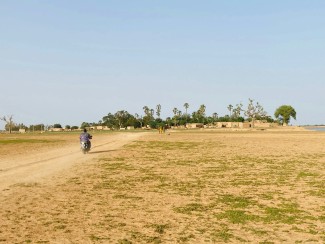|
|
|
On 30 May 2019, the African Continental Free Trade Area (AfCFTA) entered into force. The launch of trading under the AfCFTA is set to take place in early July 2019 at a special Africa Union summit. The negotiations for the second phase of the AfCFTA, covering investment, competition policy, intellectual property rights and possibly e-commerce, are set to begin later this year.
Beating all expectations, African countries are charting a fresh course in trade policy at a time of global retreat from new trade commitments.
Transforming trade in Africa
The AfCFTA – an agreement that covers both goods and services – will transform trade in Africa. The main rationale for the AfCFTA lies in the empirical observation that Africa’s intra-continental trade is much more diversified than its trade outside the continent. However, the share of intra-African trade is relatively low, at 17 per cent in 2017, held back by high tariffs between the subregional blocs and countless non-tariff barriers.
The Economic Commission for Africa (ECA) estimates that the removal of tariff barriers between African countries through the AfCFTA would result in an increase of intra-African trade by 15-25 per cent, the majority of which would be accounted for by industrial goods.[1] By 2040, the share of intra-continental trade would exceed 50 percent of total exports depending on the degree of liberalisation.
This in turn is expected to contribute to the development of regional value chains, increased industrial employment and higher incomes on the ground. These trade gains will further position African countries to participate more effectively at higher levels of global value chains.
National strategies guide effective implementation
Such a dramatic shift in the trade policy environment is understandably also raising questions on winners and losers. Large countries with diversified economies, such as Egypt and South Africa, will be well-placed to gain from the agreement.
However, African least developed countries (LDCs) also stand to benefit. Based on the ECA modelling, the gains in terms of impact on industrialisation would be the largest for LDCs. Indeed, while on average two-thirds of the total gains in intra-African exports would be concentrated in industry, this rises to three-quarters for African LDCs.[2]
Whether these estimated benefits materialise will depend on the effective implementation of the agreement. This is particularly the case for the developmental objectives stated in the AfCFTA, including “to promote and attain sustainable and inclusive socio-economic development, gender equality and structural transformation.”
For this reason, ECA is supporting AfCFTA signatories to prepare national AfCFTA implementation strategies to support the effective operationalisation of the agreement. The national AfCFTA strategies should also provide a basis for engagement with development partners. In 2017, Africa received US$15.2 billion in aid for trade disbursements, of which US$7.1 billion was disbursed to LDCs.[3]
Aid for trade in the new era
A few recommendations can be put forward to help ensure that aid for trade contributes to the new trade policy era emerging in Africa in a sustainable and inclusive way.
First, it is clear that some groups such as women and youth face higher barriers to access continental markets. Interventions should be designed to ensure their ability to benefit from the AfCFTA. An initial step would be targeted information sharing and advocacy on the agreement, the opportunities it offers and the rights and responsibilities that come with it. The 2019 Global Review of Aid for Trade survey also highlights access to finance and the need for upgrading of business skills as areas that could support empowerment of youth and women through trade in Africa.
Second, structural barriers that contribute to the different levels of access to opportunity and assets need to be addressed. While outside the strict remit of trade policy, the absence of measures intended to reduce inequalities in education and access to land, for example, is likely to lead to the benefits of increased intra-African trade concentrating in higher socio-economic groups. This will further reinforce inequalities and jeopardise the transformational impact of the AfCFTA. Aid for trade can be directed to support the review of national policies to ensure that they contribute towards inclusive gains. This would further promote coherence in national policymaking and development cooperation.
Third, there is need to support monitoring of the impacts of AfCFTA implementation. ECA, for instance, is committed to developing a monitoring tool, the AfCFTA Country Business Index, to track the effect of the agreement across several dimensions including trade flows, structural change and inclusion. Countries will be ranked according to their performance in these dimensions. The index will also serve as a tool for stakeholders to engage with policymakers and hold them accountable on the implementation of the agreement. Aid for trade can assist this dialogue through projects that strengthen institutionalised stakeholder involvement in trade policy.
Finally, while aid for trade disbursements are primarily directed to individual countries, there is scope to support projects that promote cross-border institutions, capacities and cooperation. This will help target more explicitly the strengthening of intra-African trade and secure the derived benefits of the AfCFTA for LDCs.
------------
[1] The overall effect may be underestimated as services liberalisation and the erosion of non-tariff barriers were not taken into account in ECA’s modelling.
[2] Mevel. S. (forthcoming), An empirical assessment of AfCFTA modalities on goods.
[3] Based on data for Africa from the 2019 Global Review of Aid for Trade (ECA and WTO, forthcoming).
------------
* David Luke is Coordinator and Heini Suominen Economic Affairs Officer, African Trade Policy Centre at the UN Economic Commission for Africa.
--------
This policy series has been funded by the Australian Government through the Department of Foreign Affairs and Trade. The views expressed in this publication are the author’s alone and are not necessarily the views of the Australian Government.
If you would like to reuse any material published here, please let us know by sending an email to EIF Communications: eifcommunications@wto.org.



